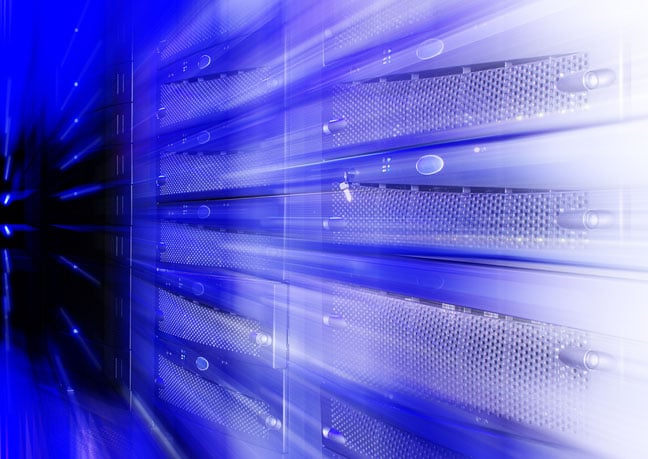Dell, HPE Grind Out Infrastructure Sales But Signal Customer Caution

There’s some life in the enterprise datacenter industry judging by the financials reported by Dell and Hewlett Packard Enterprise, the problem for Dell is that its group growth is being weighed down by crappy PC sales.
The eponymously named Texan tech giant, founded and still chaired by Michael Dell, last night released numbers for its Q4 of fiscal 2023 ended February 3 [PDF] with total revenue down 11 percent year-on-year to $25.05 billion, but up 1 percent for the entire 12 months to $102.3 billion.
It was a tale of two halves for the business: Infrastructure Solutions Group was up 7 percent in the quarter to $9.905 billion, with server and networking up 5 percent to $4.94 billion and storage up 10 percent to $4.965 billion. Group operating income bounced 40 percent to $1.54 billion.
The picture was markedly different for the Client Solutions Group: revenue tumbled 23 percent to $13.361 billion, including a 17 percent drop in Commercial to $10.697 billion, and a 40 percent crash in Consumer to $2.664 billion.
Co-chief operating officer Chuck Whitten said on a conference call that the business was “pleased with our FY’23 execution and financial results given the macroeconomic backdrop."
He said the PC market “remains challenged”: industry shipments in the pandemic peaked at near 350 million unit for 2021 and have tailed off ever since. He referred to Dell as a “structural share gainer” in server and storage in what remained a difficult market.
For the year, Dell’s server and networking unit grew revenues 14 percent to $20.398 billion, and storage was up 9 percent to $17.958 billion.
Group operating profit was down 26 percent for Q4 to $1.189 billion, and up 24 percent for the year to $5.77 billion.
Dell, which said last month it plans to cut 5 percent of its workforce, issued guidance that was lower than Wall Street expected and its falling share price reflected this. It anticipates revenue to be “seasonally lower than average” for its Q1 than ends APRILV
“The broad caution in the IT spending environment that we started calling out in Q2 persists as customers continue to scrutinize every dollar in the current macro environment,” said Whitten.
“Exiting FY '23, we saw select growth in verticals like financial services, transportation and construction and real estate. However, we've continued to see demand softness across most other verticals, customer types and regions.”
He said “underlying demand in PCs and server remains weak, ands we are seeing signs of changing behavior for storage,” he said. Q4 was strong for storage but sales cycles are lengthening.
- Dell planning job cuts as PC demand jumps off a cliff
- PC price promos, flaky economy halve HP profits
- How many premium portable sales = HP CEO's 2022 compensation?
- HPE drops private 5G into GreenLake by acquiring Athonet
At infrastructure rival HPE, which doesn’t have to worry about customer sentiment in the PC market, revenues for its Q1 of its fiscal 2023 ended January 31 grew 12 percent year-on-year to $7.8 billion, this was the highest mark reached since Q1 of fiscal 2016.
The Compute division (servers) was up 14 percent to $3.45 billion, HPC and AI was up 34 percent to $1.056 billion, Storage was up 5 percent to $1.187 billion and Intelligent Edge was up 25 percent to $1.127 billion. This meant only Financial Services was down, falling ten percent to $293 million.
Operating profit jumped to $591 million from $448 million, on the back of a record operating margin of 11.8 percent. Those efforts to reduce expenses em to be paying dividends, though that will be of little consolation to those out of a job.
HPE’s hybrid cloud platform, GreenLake, racked up a run rate of $1 billion for the first time.
On its outlook, HPE is forecasting year-on-year growth of nine percent for its Q2 which contains CFO Tarek Robbiati’s thoughts on the “macroeconomic picture, inflationary pressure, or exit from Russia and Belarus in 2022 and foreign exchange risk”. ®
From Chip War To Cloud War: The Next Frontier In Global Tech Competition
The global chip war, characterized by intense competition among nations and corporations for supremacy in semiconductor ... Read more
The High Stakes Of Tech Regulation: Security Risks And Market Dynamics
The influence of tech giants in the global economy continues to grow, raising crucial questions about how to balance sec... Read more
The Tyranny Of Instagram Interiors: Why It's Time To Break Free From Algorithm-Driven Aesthetics
Instagram has become a dominant force in shaping interior design trends, offering a seemingly endless stream of inspirat... Read more
The Data Crunch In AI: Strategies For Sustainability
Exploring solutions to the imminent exhaustion of internet data for AI training.As the artificial intelligence (AI) indu... Read more
Google Abandons Four-Year Effort To Remove Cookies From Chrome Browser
After four years of dedicated effort, Google has decided to abandon its plan to remove third-party cookies from its Chro... Read more
LinkedIn Embraces AI And Gamification To Drive User Engagement And Revenue
In an effort to tackle slowing revenue growth and enhance user engagement, LinkedIn is turning to artificial intelligenc... Read more

